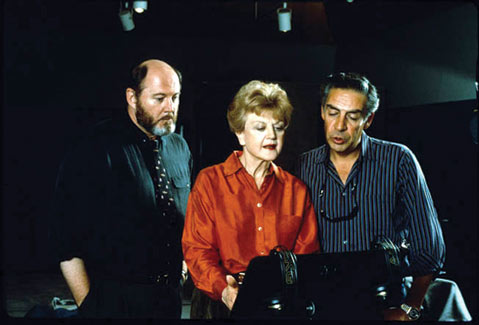Waking Sleeping Beauty
The Re-Animation of Disney

Documentary fans might find their corporate hanky-panky meter pinging upon learning that this chronicle of the Disney company’s remarkable rebirth as an animation powerhouse was produced by … Disney. Don’t we ask for independent investigation-style objectivity, or even an opposing point-of-view (in the case of Michael Moore flicks, for instance) from our docs?
No matter: Waking Sleeping Beauty, nicely directed by longtime Disney producer Don Hahn, is a curiously fascinating “inside job,” and an at least somewhat warts-and-all account of a recent chapter of Hollywood history. The larger story involves art, craft, and the new era of movie-biz puppeteering—in the form of Michael Eisner and Jeffrey Katzenberg, hired by Roy E. Disney to revitalize a sinking ship, which they did admirably. That happened thanks to the box-office kapow and creative firepower of animated films like Beauty and the Beast, The Little Mermaid, Aladin, and The Lion King. Life after computer animation is another story, entirely.
At root, Waking Sleeping Beauty tells the saga of Disney’s dynamic decade in the animation department of the business, between 1984 and ’94, when it pulled out of a long dormant period following the heyday of the ’30s and ’40s. In Burbank, the animation department was kicked out of the historic, linoleum-floored digs where Walt and his talented crew of original animators effectively pioneered the animation feature film. They were dispatched to a squalid industrial area in Glendale; but after demonstrating commercial potential and even acknowledgment at the Oscars, it became apparent that “animation is no longer at the kids’ card table in the kitchen,” said one Disney stalwart. The sweeping, eye-grabbing Michael Graves-designed new animation building in Burbank stands as architectural and corporate testimony to the renaissance of this “Mickey Mouse operation,” as insiders are fond of dubbing it.
Meanwhile, tensions were mounting in the Eisner-Katzenberg black-magic kingdom. It was a power struggle that went public in the mid ’90s, a period when the box-office numbers and executive dramas and tragicomedies in the studio business became fodder for everyday movie fans. Waking Sleeping Beauty also tells that part of the story, though with more even-handedness and less tabloid-ish hand-wringing than whistle-blower Nick Broomfield might have. Fifteen-plus years on, we can look back at Disney’s re-animation process in the clean, admiring glow of hindsight—the greatest gift of this fine, sweet documentary.



